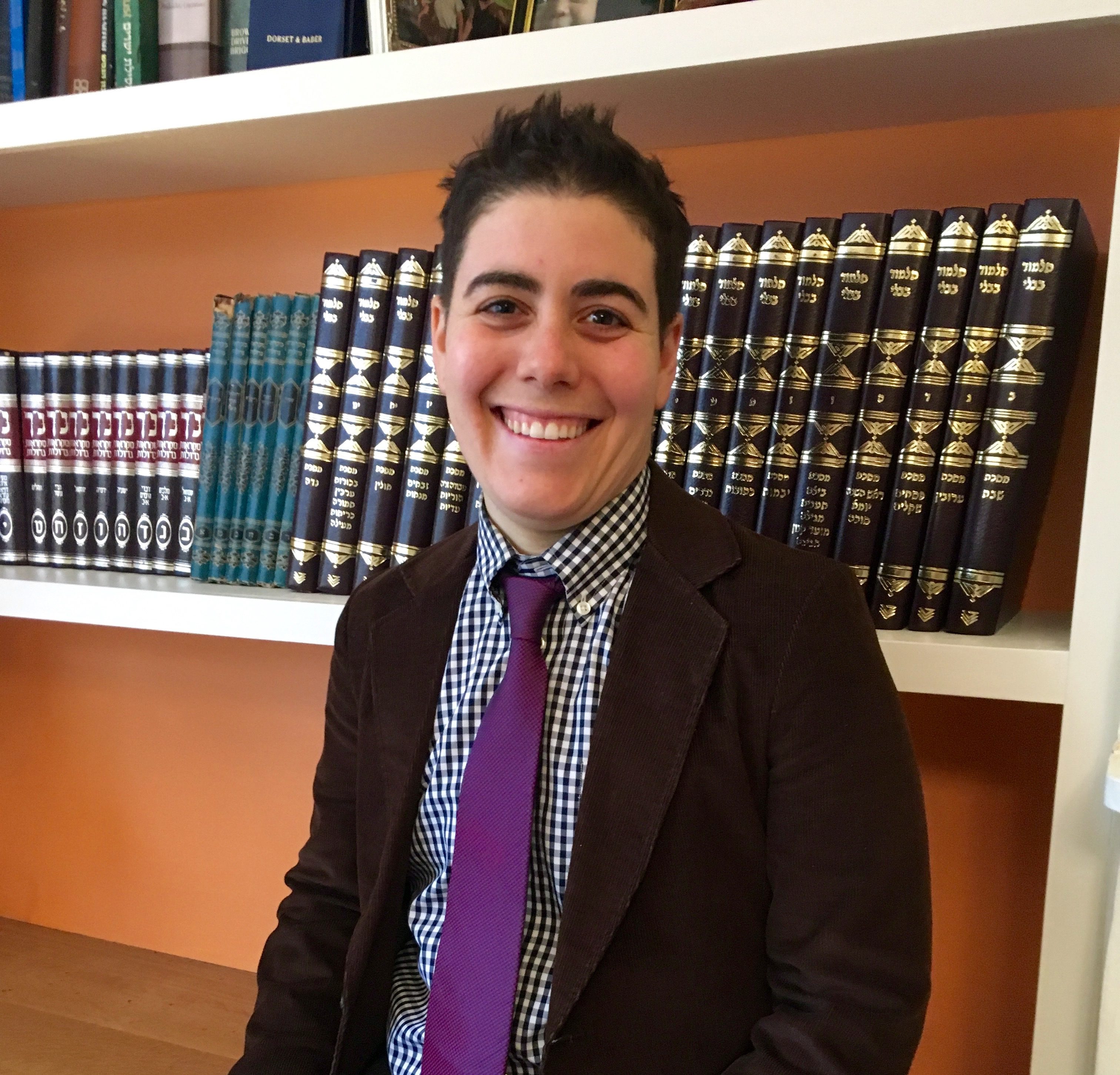A week ago Sunday, marked by the new moon of the Jewish month of Adar, I spent the day at the Mount Carmel Cemetery in Northeast Philadelphia, bearing witness to the desecration of 539 gravestones. Joining with Muslim, Quaker and Christian neighbors, people of faith and conscience, our hands in the earth restoring headstones, as testimony and prayer. I could hear the echo of Hallels past and call of the sliver of the new moon of Adar: “When we enter Adar, Joy Increases!” Adar and the topsy-turvy spectacle that is Purim are about increasing our experience of joy.
Joy Increases!? In the same week that a Philadelphia cemetery is desecrated, 17 Jewish institutions received bomb threats, the fourth mosque is attacked with arson, and Ciara McElveen is violently murdered, the sixth Trans Woman of Color in 2017 alone. Joy Increases!? In the week that the Water Protectors are forcibly removed from Standing Rock and a father, who himself was a widower, takes his own life immediately following deportation, leaving behind three orphaned children.
How can we responsibly talk about a joy amidst daily political devastation?
In truth, this is a question I have asked myself for years. For three years in Boston, I taught Jewish spirituality in prison, including a series of classes based on a book called Judaism’s 10 Best Ideas, by Rabbi Arthur Green. The first three times I taught this book, I skipped the first chapter, entitled “Simcha – Joy as a religious precept.” I could not muster the courage to talk about joy in prison. It seemed like rubbing salt in the wound of men longing to see the faces of their young children, literally starved for joy.
Then one year I decided to throw a Hanukkah party. And in walks Mordechai. (Yes, that was really his name!) He is an older cisgender Jewish man with an Israeli accent. Mordechai had just completed an eight year sentence, and just when he thought he was being released, he got picked up by ICE and detained by this corrections facility.
So Mordechai walks in along with a handful of other rather beefy older men who had likely never been to a Hanukkah party before. I am playing some cheesy songs on an old boombox. The jail cook made some rather decent latkes and bimuelos, and there is a banner that says Happy Hanukkah hanging on the wall. We begin by lighting candles and invoking the presence of loved ones, and then we proceed to play the most competitive game of Dreidel I have ever been part of. When the game ended, there were a few minutes left and Mordechai looks at me and says, can we dance the hora?
I must admit, I have never actually danced the hora on Hanukkah.
But I figured, who am I to deny a hora!?
Mordechai broke out into song, and before we knew it we were all singing Oseh Shalom at the top of our lungs and swinging each other. The room got sweaty, round and round, in and out, louder and louder. These men, who moments ago would not even share half a chocolate coin with one another, were hugging, and teary—and so was I.
It was the best Hanukkah party I had ever been to. And in that moment I understood the words of Khalil Gibran:
A woman said, “Speak to us of Joy and Sorrow.”And he answered:Your joy is your sorrow unmasked.And the selfsame well from which your laughter rises was oftentimes filled with your tears.And how else can it be?The deeper that sorrow carves into your being, the more joy you can contain.
Joy, or in Hebrew, Simcha, is not plain old happiness. Which, don’t get me wrong, is a great thing. We have other words in Judaism for happiness—a long list in fact appears in the traditional blessings recited at a wedding—Gila, Rina, Ditzah, Hedvah—gladness, jubilation, cheer, delight.
But Simcha,
Simcha is different. Simcha is a shared experience of the sacred. It is a well we dip into, draw from and create together.
Joy might be something we can cultivate, but even more so, it is something that cultivates us. If we let it.
This is the wisdom of joy as a religious precept. The next time I saw them, all the men told me that party stayed with them all week. For the first time I had the courage to teach the chapter about Joy. I finally understood that Joy and suffering are inseparable parts of a spiritual path.
This is also the wisdom of Purim. The Megillah teaches, ונהפוך הוא (Esther 9:1), “Sometimes it’s the reverse.” It is precisely our capacity to feel the pain of this moment, to move from apathy to empathy, that then allows us to fill ourselves with a joy that is healing, connecting and resilient. I have always thought that Judaism was so good at personal and communal mourning; at making space to grieve, to heal and to transform. And I felt that on Sunday evening, as a group of us gathered in prayer to say Kaddish before leaving the cemetery. It is precisely because Judaism is so good at holding hard emotions, at ritualizing and supporting us through difficult times, which these certainly are, that Judaism is also able to carve out space for simcha, for sacred joy.
Mi SheNichnas Adar, Marbin b’simcha.
This Purim may we marinate in Joy and let it carry us, knowing that the selfsame well will likely again be filled with tears.
Editor’s Note: An earlier version of this d’var Torah appeared in T’ruah’s Handbook for Jewish Communities Fighting Mass Incarceration.
Rabbi Ari Lev Fornari is the spiritual leader of Kol Tzedek Synagogue in West Philadelphia, PA.

